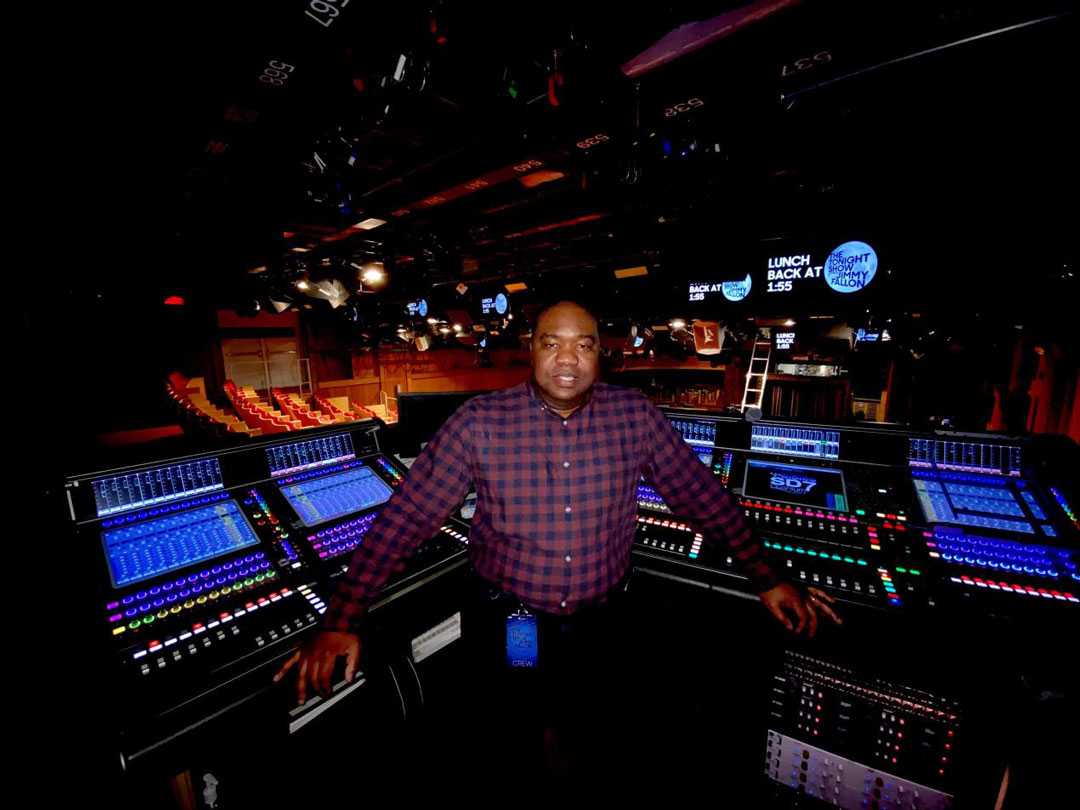Tonight’s the night for DiGiCo
- Details

Artless Poole, Jr. has been with The Roots for 20 years, mixing the band’s live shows as their front-of-house engineer, and is there for them on The Tonight Show as the house mixer for the band, as well as the show’s diverse guest artists, and everything else that happens on that stage. It all goes through Poole’s SD7 console, supported by a DiGiCo EX-007 fader expansion unit.
“Mixing music on television has always been a goal of mine, and late-night talk shows have become more and more based around music, introducing new music and artists across every genre every day, and I love that I get to mix that,” says Poole, who has also mixed live shows for Santigold and D’Angelo, as well as several episodes of The Voice, and on Jimmy Kimmel Live! and The Queen Latifah Show. “It’s all I ever wanted to do.”
Poole oversees more than 200 inputs each night, and that channel load has become much easier to manage since the show upgraded his SD7 with a new Quantum engine. The upgrade tripled the number of FPGAs for processing, now allowing upwards of 432 processing channels at 96 kHz. “I’ve been able to achieve a more streamlined workflow on the console now; the increase in processing paths, input channel count and number of layers has helped me tremendously.”
Poole’s console is one of three SD7s installed for The Tonight Show; mixer Jaime Gudewicz uses the other two SD7s, one to mix monitors for guest bands (located next to the stage in the traditional monitor placement) and the other for The Roots, who also use an immersive KLANG in-ear monitor mixing setup. These are all on a single fibre loop, allowing them to all gain-share music signals between the show’s five SD Racks - one at FOH, two for monitors (with 32-bit cards), and two dedicated to The Roots’ bandstand - while other production audio comes to the consoles as MADI, through an Orange Box converter.
(Jim Evans)
















